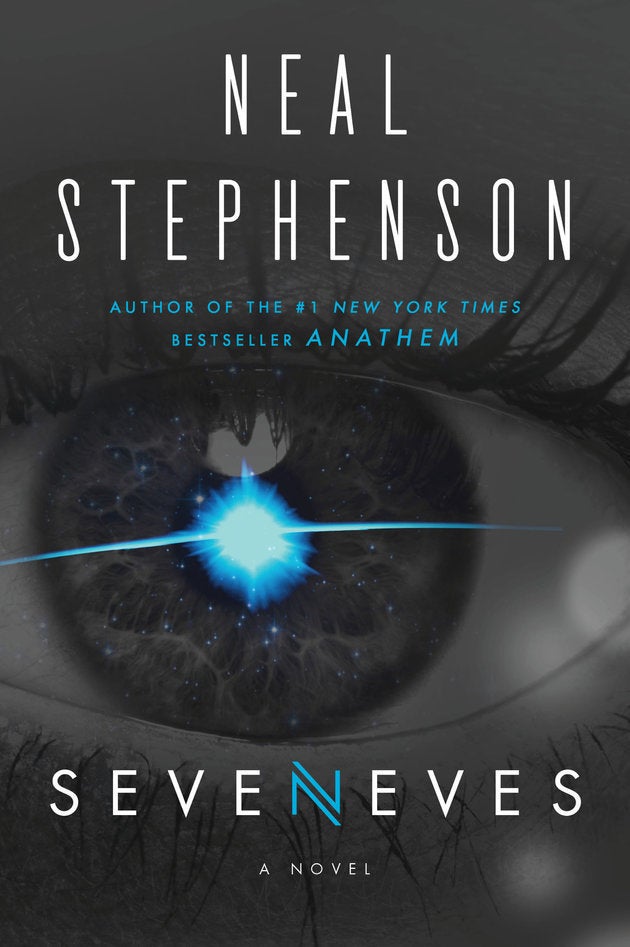If you’re looking for something -- a geographic landmark, your childhood home, a favorite spot near your college campus -- it shouldn’t take you more than a few clicks to find it. Programs like Google Earth, miraculous though they may seem, have made people like Andrew DeGraff hobbyists rather than necessities. An illustrator by trade, his interest since childhood has been in schematics, technical drawing and map-making.
After turning his skills to a handful of pop art shows, he decided to combine his passion for maps with his interest in storytelling. The result is a collection of maps that convey not only the locations of fictional universes, but the trajectories of the characters who move through them. So, the rolling hills of Twain’s American South have river-like paths running through them to show the viewer Huck’s journey.
In an interview with The Huffington Post, DeGraff compared his work with the efficiency of digital mapping. “I think the problem with that is that we get really useful, but incredibly homogenized maps,” he said. “It's made maps really clean, to the point that I'd call them cold.”
Read more of DeGraff’s thoughts on mapping, and view an excerpt from his forthcoming book Plotted below.
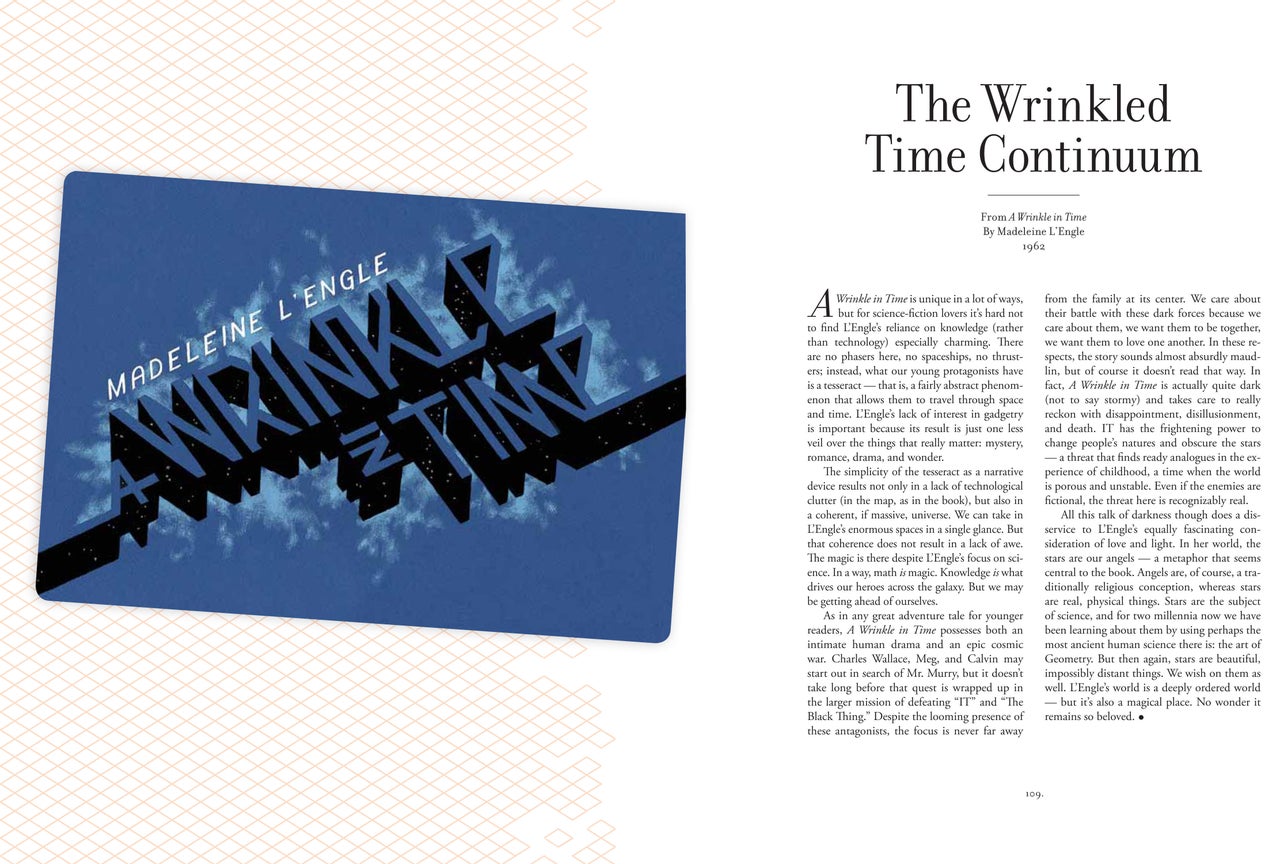
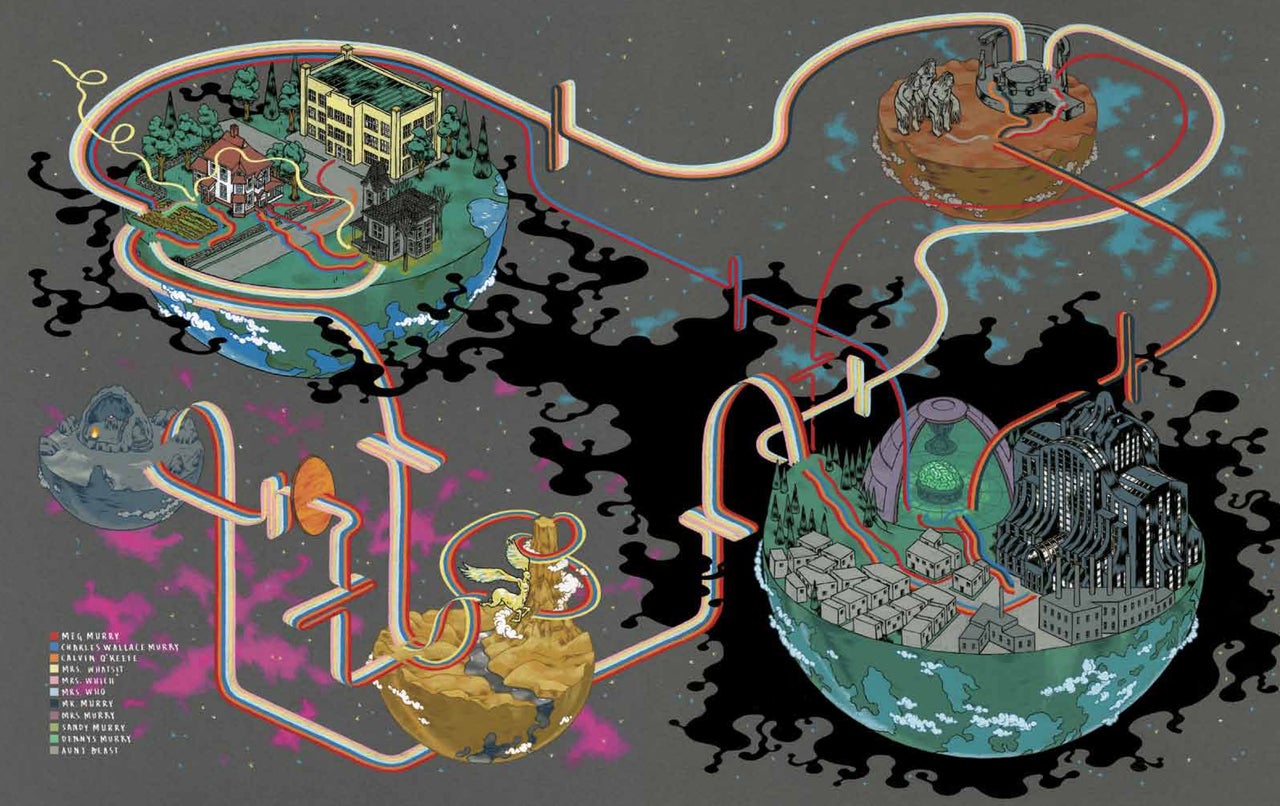
Why did you decide to start mapping fictional worlds?
It was really a lot of things that merged together over time. As a kid my walls were plastered with maps harvested from my parents' National Geographics, and I was always attracted to schematics and any sort of mind boggling technical drawing.
When I started as a professional illustrator, I got a few jobs creating maps for travel magazine illustrations, and had a lot of fun doing them. I realized I really loved doing architecture and landscape. At the time I was also showing in some pop-culture shows, and I noticed that a lot of the work was based on character portraits, characters in scenes, or the characters re-contextualized. There's nothing wrong with that -- and I love a lot of that work, but it's often one character from one part of the movie. I wanted to do something that was more complete, maybe the whole film if I could. I thought I'd try to take all the characters out and just use the sets and locations, and I replaced the characters with colored arrows that followed their action in the movie. I was really happy with the result, and people seemed to really like them. At a glance the movie maps were a snapshot of the complete film, and up close you could follow the actions and interactions of nearly everything that happens. It was really interesting to take that into mapping books for Plotted. There's so much more information, and at the same time a lot more room for invention.
Are there some books that are more difficult to map than others?
Definitely. Books live so much in the narrator's voice and mind that it can be hard to encapsulate, and the raw length and depth can be daunting. I don't think any stories are impossible, but some certainly require a little more creativity and a looser definition of "mapping". Even something like Dickens' A Christmas Carol actually poses some thorny problems because things happen in the same place, but at totally different time periods as Scrooge travels back and forth through time.
Generally, adventures work best, but those get can get really big with the depth and length of the book. The three paintings for The Adventures of Huckleberry Finn ended up being equivalent to a 60 x 20-inch, sofa-size painting, even with a lot of little things cut out. When I map a movie, I can pretty much rebuild it shot-for-shot. But books can just be too darn big and too deep for a shot-for-shot sort of approach. It's really about choosing how to look at a book in terms of your field of focus and what you want to reveal, and picking your punches.
Which fictional world do you wish you could explore?
I think Jules Vernes' Around the World in Eighty Days sounds amazing. To go around the world in pre-digital, pre-flight, using steam-driven technology would be amazing. That time period with its construction and design, is really interesting to me. I'm no steampunk fan, but I think the 1870s were a time when technology was outpacing its applications, much as it is now. In the 1870s however, the applications were physical and mechanical, whereas now they're digital and mostly intangible to human experience. Eighty days sounds like a nice, slow, more dangerous, but more intimate ride round the globe.
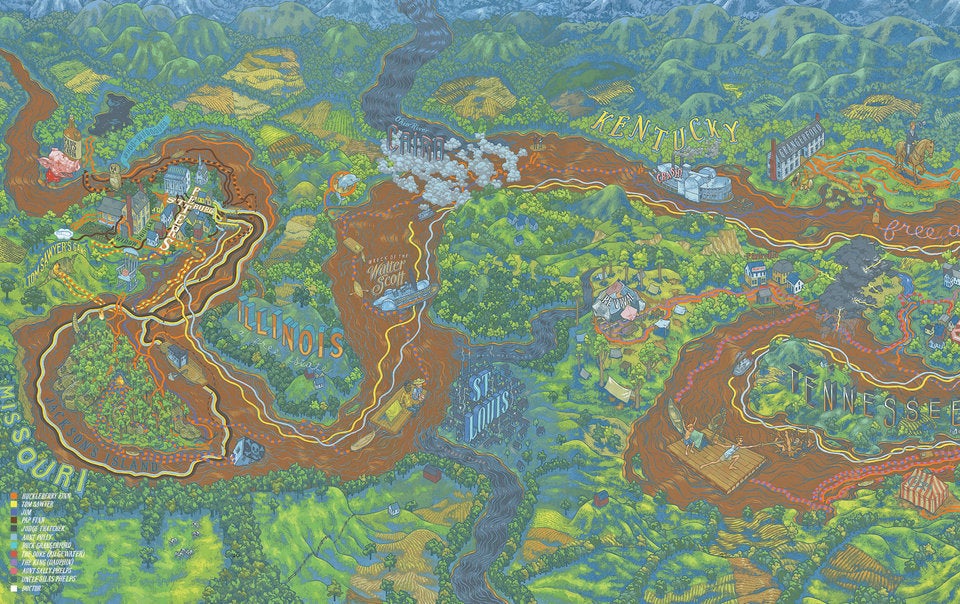
Are there any mapmakers whose work you particularly enjoy?
There are some amazing current illustrators whose maps I love, including John Hendrix, Josh Cochran, Katherine Baxter, Jenni Sparks, Martin Haake, eBoy -- there's a lot more I could mention. It's just a really fun genre. Lots of drawing, which I think is powerful in and of itself. I also love the medieval European mapmakers like Frans Hogenberg and the the maps from feudal and Edo period Japan. There's something about those imagined bird's eye views that are simply magical. If you've never seen the great Japanese print master Hokusai's "Map of China,” prepare to have your socks knocked off.
Physical maps have become somewhat of a relic. How in your opinion has GPS influenced physical map design?
You can't ignore the quality of satellite imagery or utility of the digitally-based map with its changing scale and direct link to your location. I think the problem with that is that we get really useful, but incredibly homogenized maps. It's made maps really clean, to the point that I'd call them cold. The land is tan or grey (in regular modes) and the water is light blue. There's ofter no differentiation in anything: states, regions, and countries are all the same. Fresh and salt water looks the same, and many streams and natural landmarks aren't labeled. I understand that for the maps on your computer and phone, utility is king -- but I don't think that utility requires uniformity. I think some more arbitrary choices in terms of fonts, colors or baseline customizable options, could increase utility and understanding.
What mood do you hope your works will evoke?
For these literary maps I think the desired experience is different for people who have read the books and for people who haven't. But for both of those camps, I'd say ideally I want people to be a little overwhelmed at first, but intrigued enough to explore. Part of the fun of looking at a map is that you can't really take it all in on the first glance. I hope previous readers have the story jump back to life in their mind as they explore. I hope newcomers to the novels and potential readers get an idea of the scope and identity of the story, and hopefully a bit of wonder. Maybe they'll never read it, but they will know enough to understand its context when someone mentions "Ellison's New York," or "Dickensian London".
What elements do you think every map should have?
Every map should have some sort of system or framework for managing the data, and a fixed point of view. A map should be "true" after all -- even if it's mapping a complete fiction. I think you need to stick to a thesis about the data and let the data do the talking. For most of the maps in Plotted, I plotted characters' physical movement and let that one aspect tell the story. I change scale a bit and tweak the reality, but they're all built on feeding the information from the story through an idea that serves as fixed lens. The other part of the system I think is important in map-making is my mantra while I'm doing these: "Everything is as important as everything else." Which to me means that I try to draw every tree, car, building or mountain with the same degree of care. It sounds easy, but in practice that means that over the course of a book there's probably thousands of trees, hundreds of buildings with thousands of windows -- all of which are hand drawn. I think if a map, especially an illustrated map, loses that continuity, it loses its usefulness.

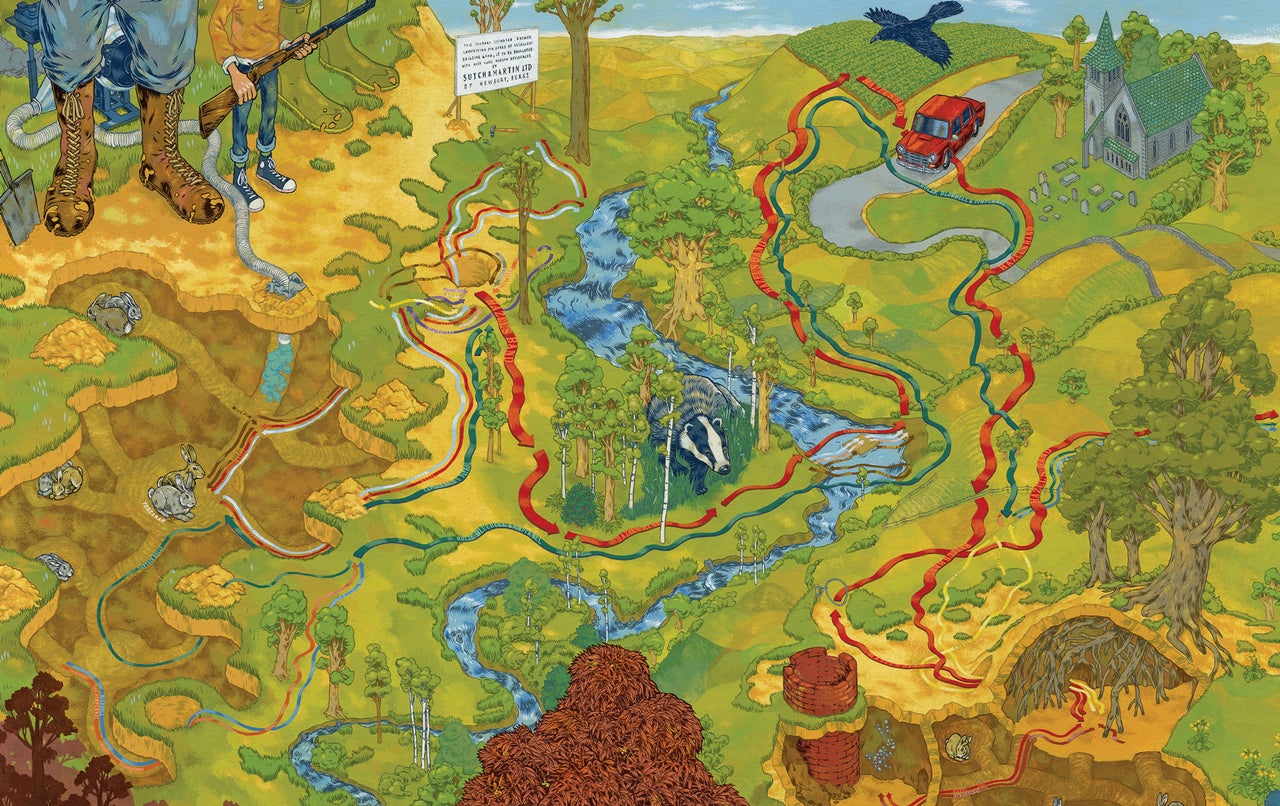
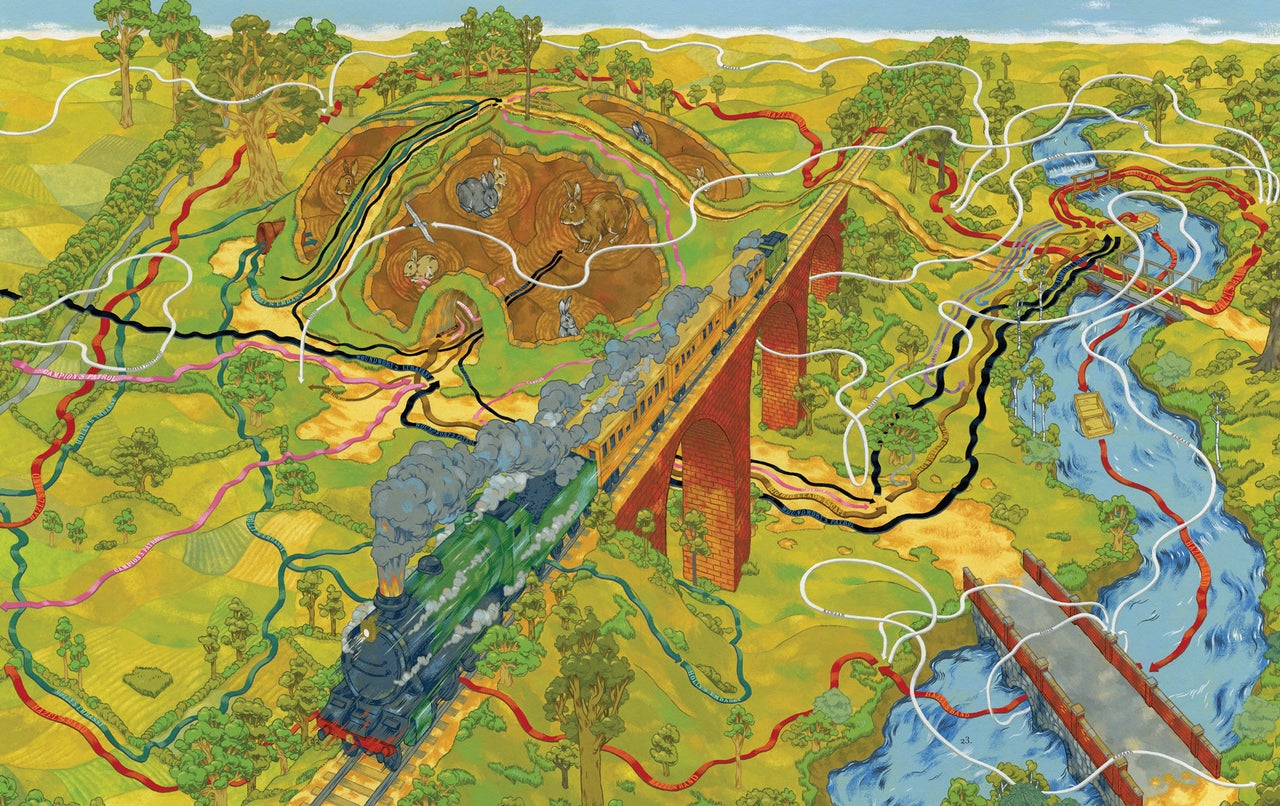
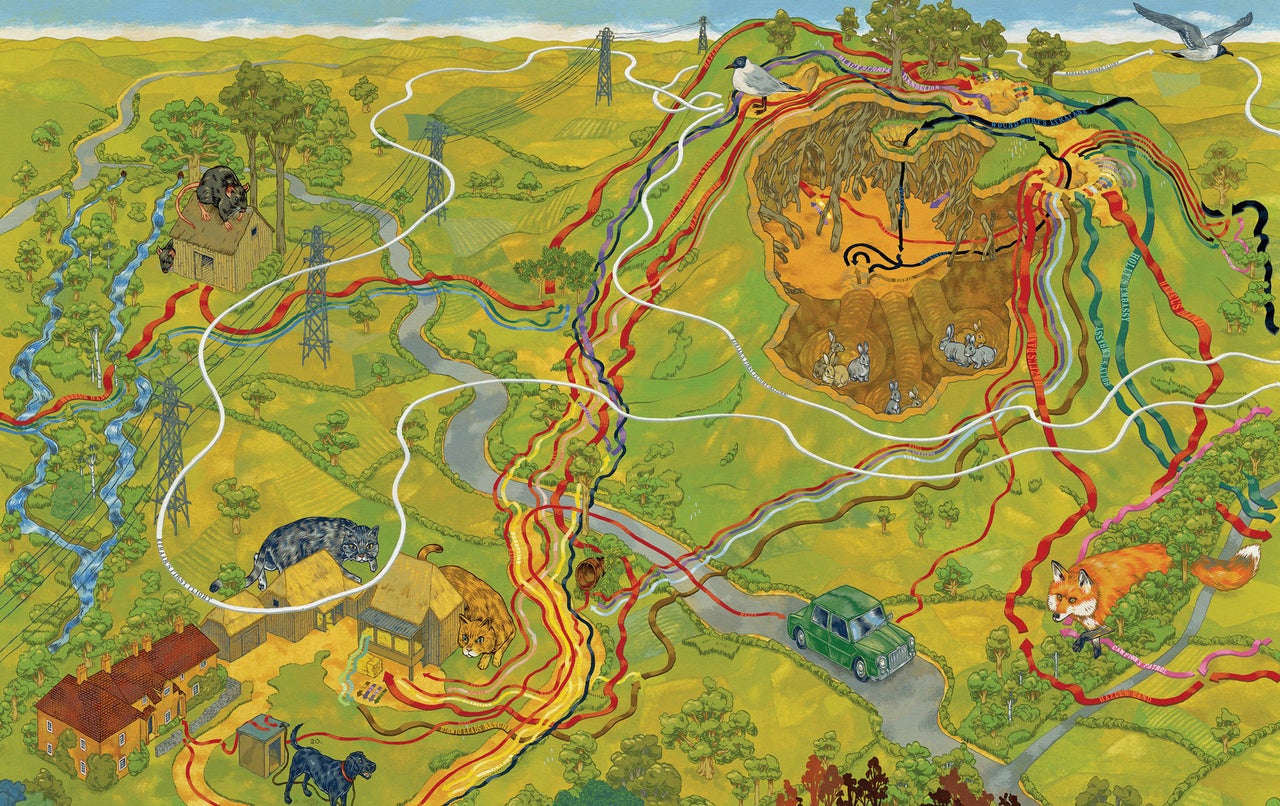
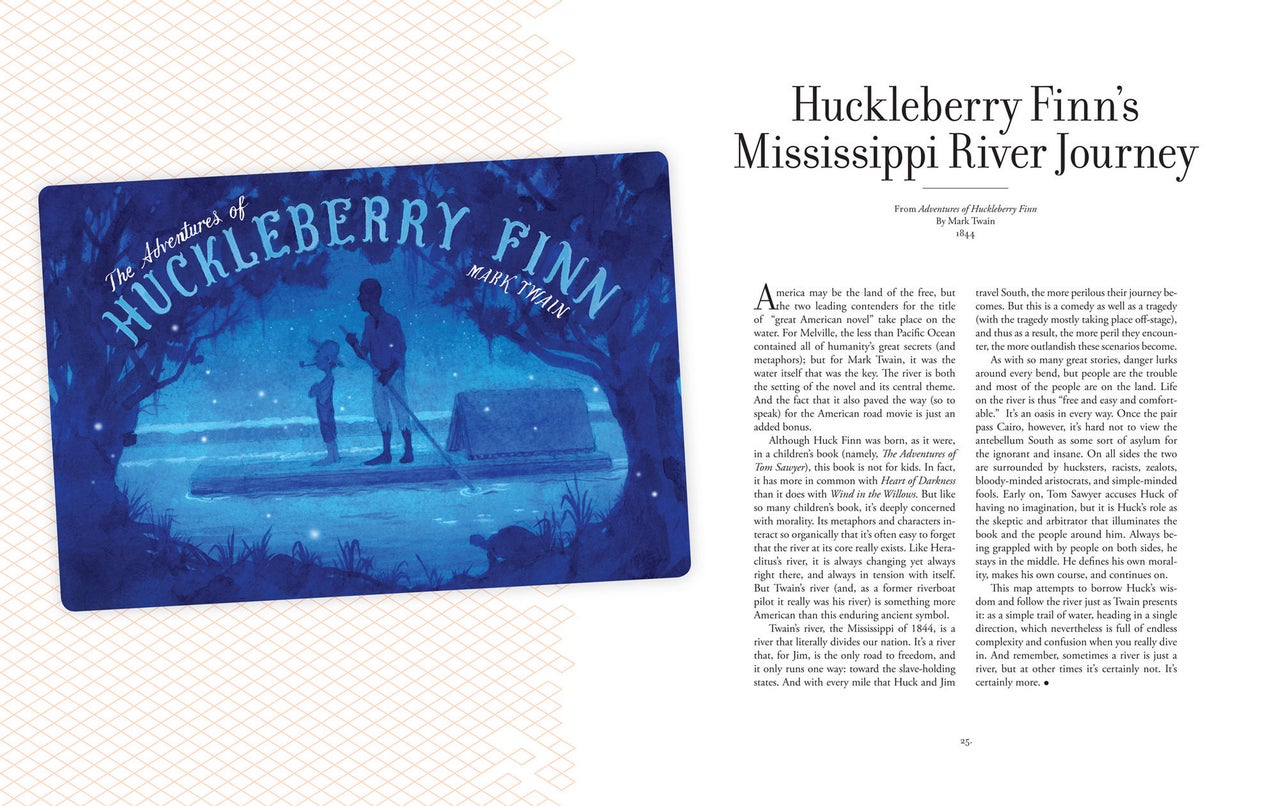
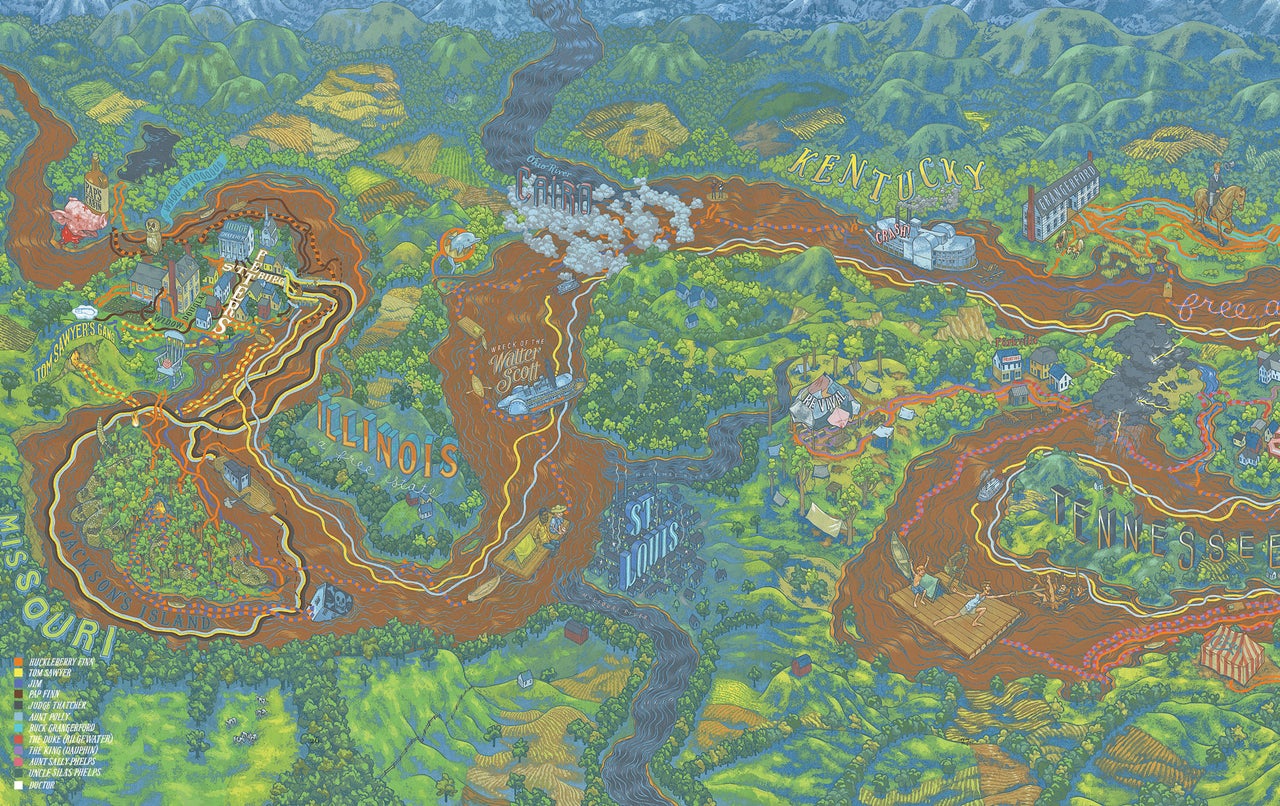
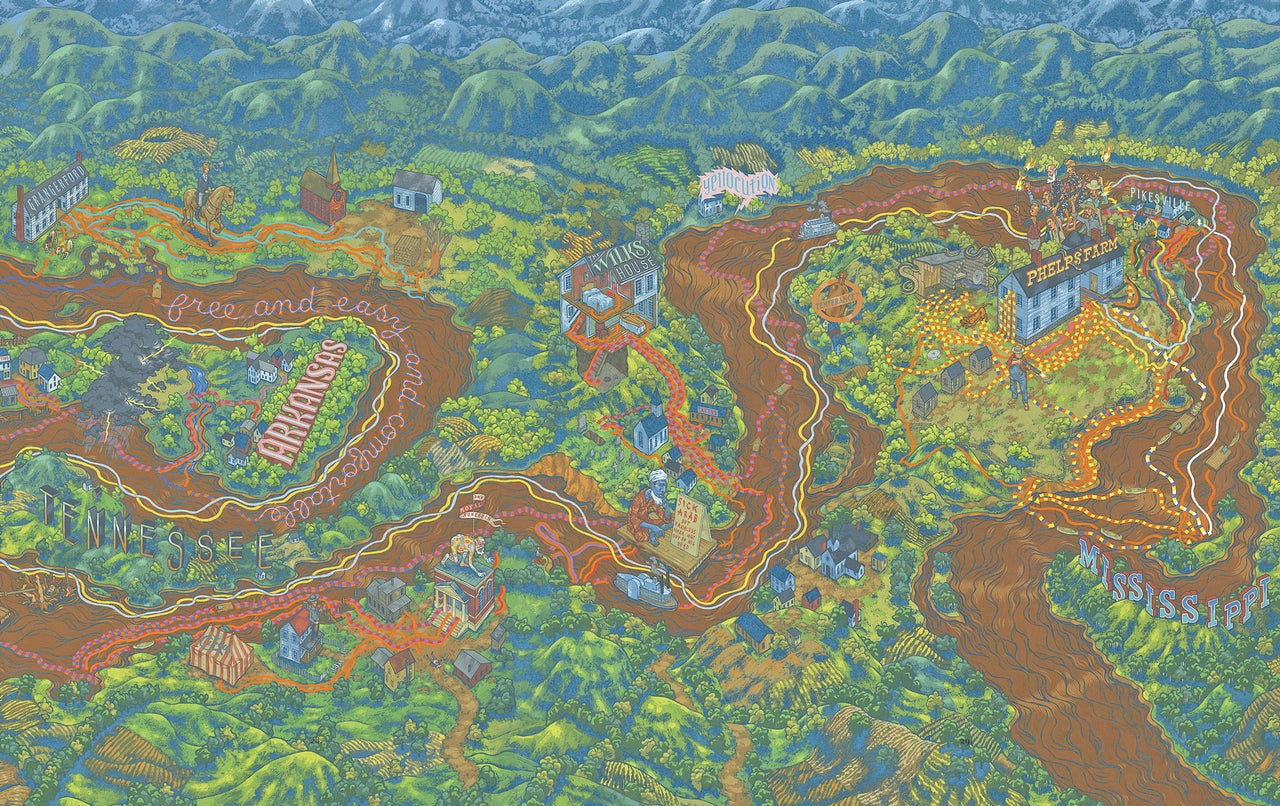
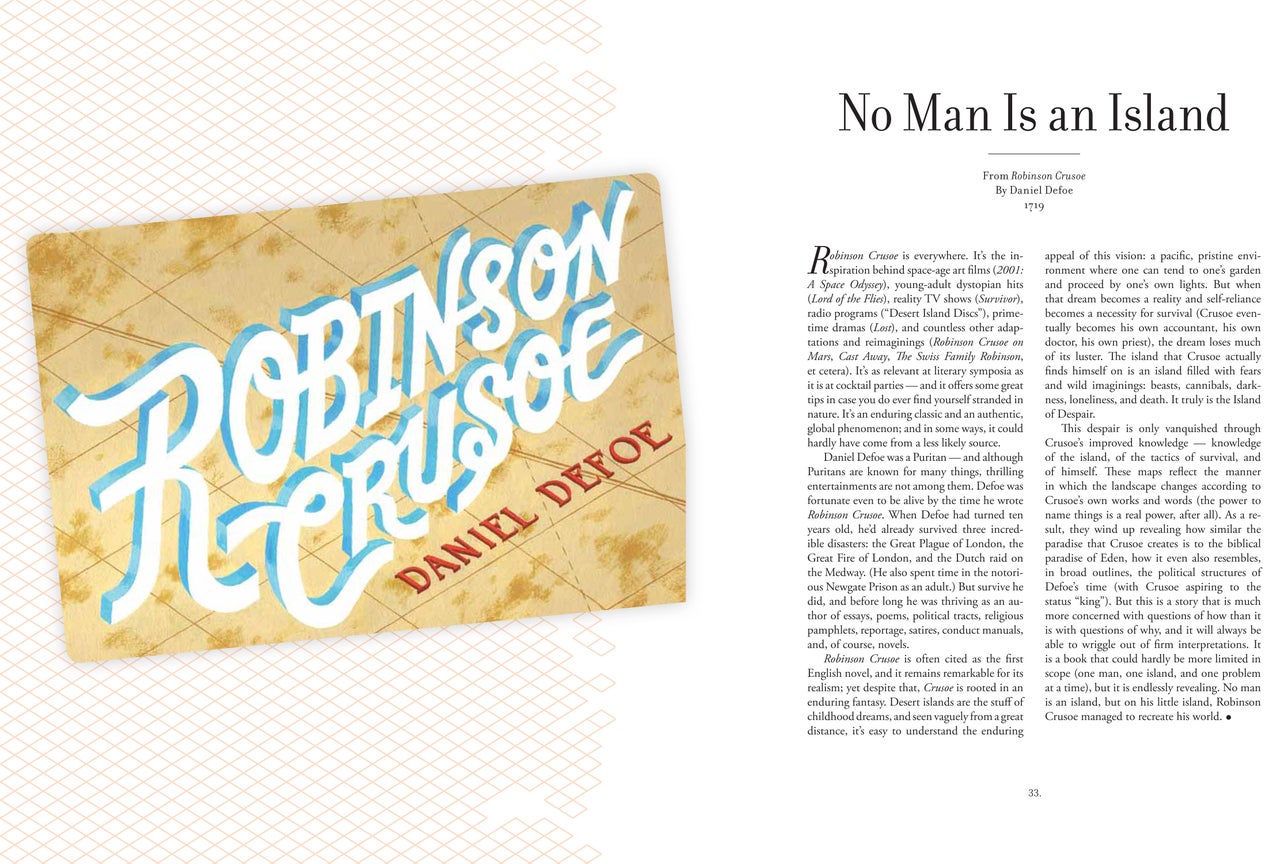
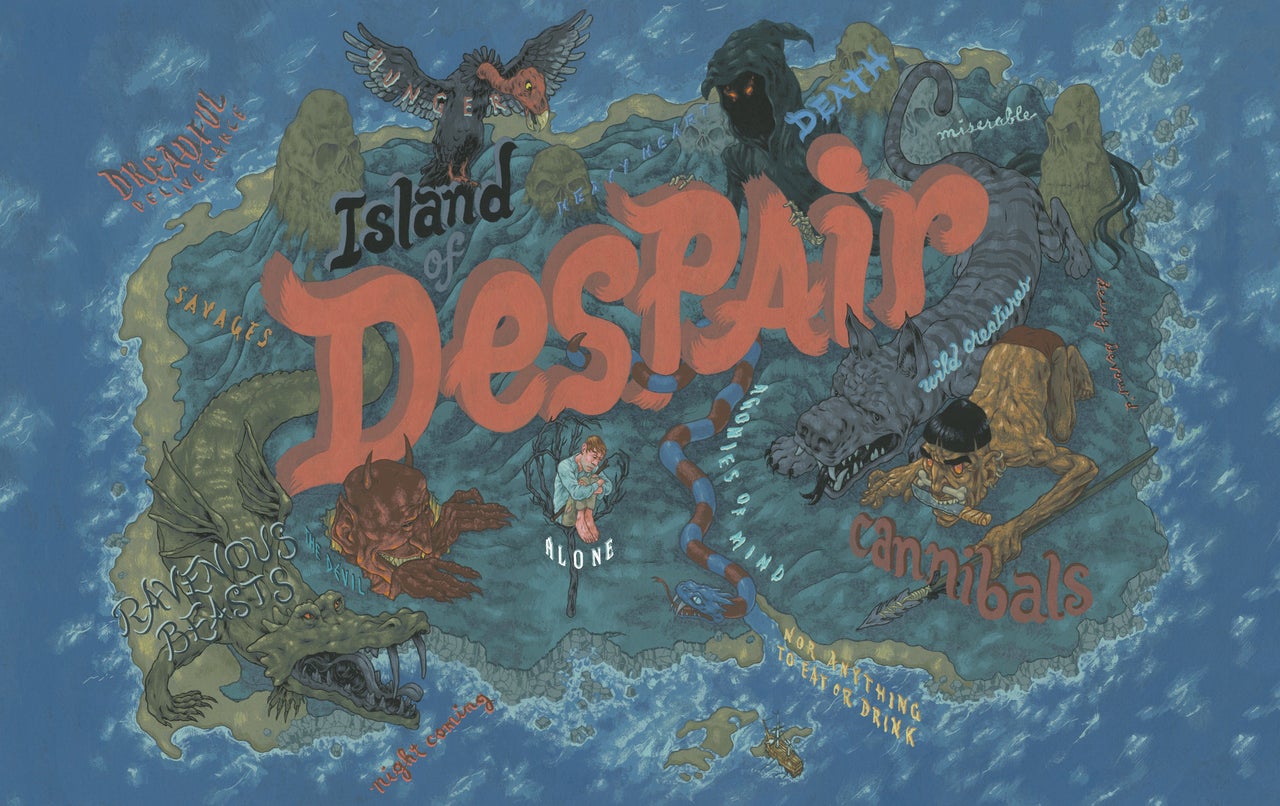
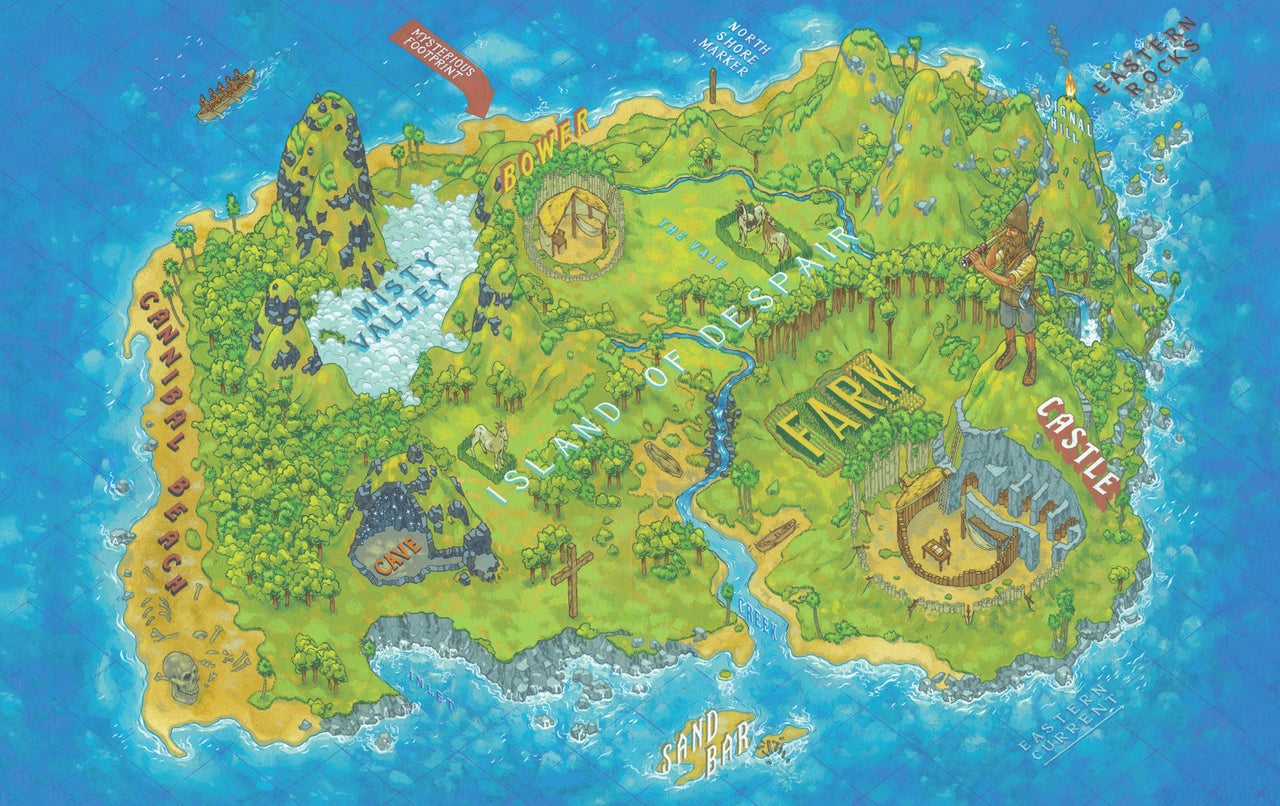
Also on HuffPost:

